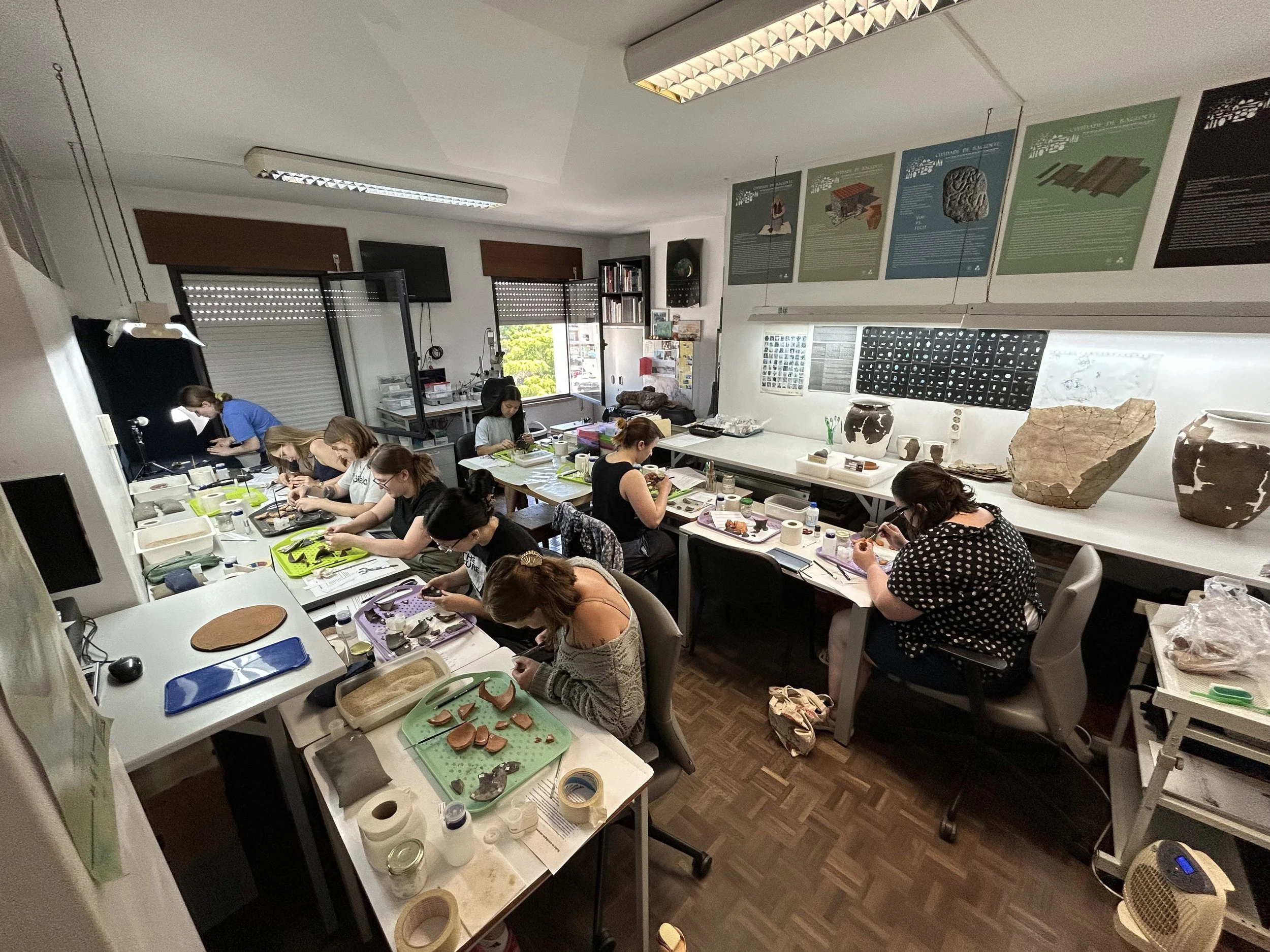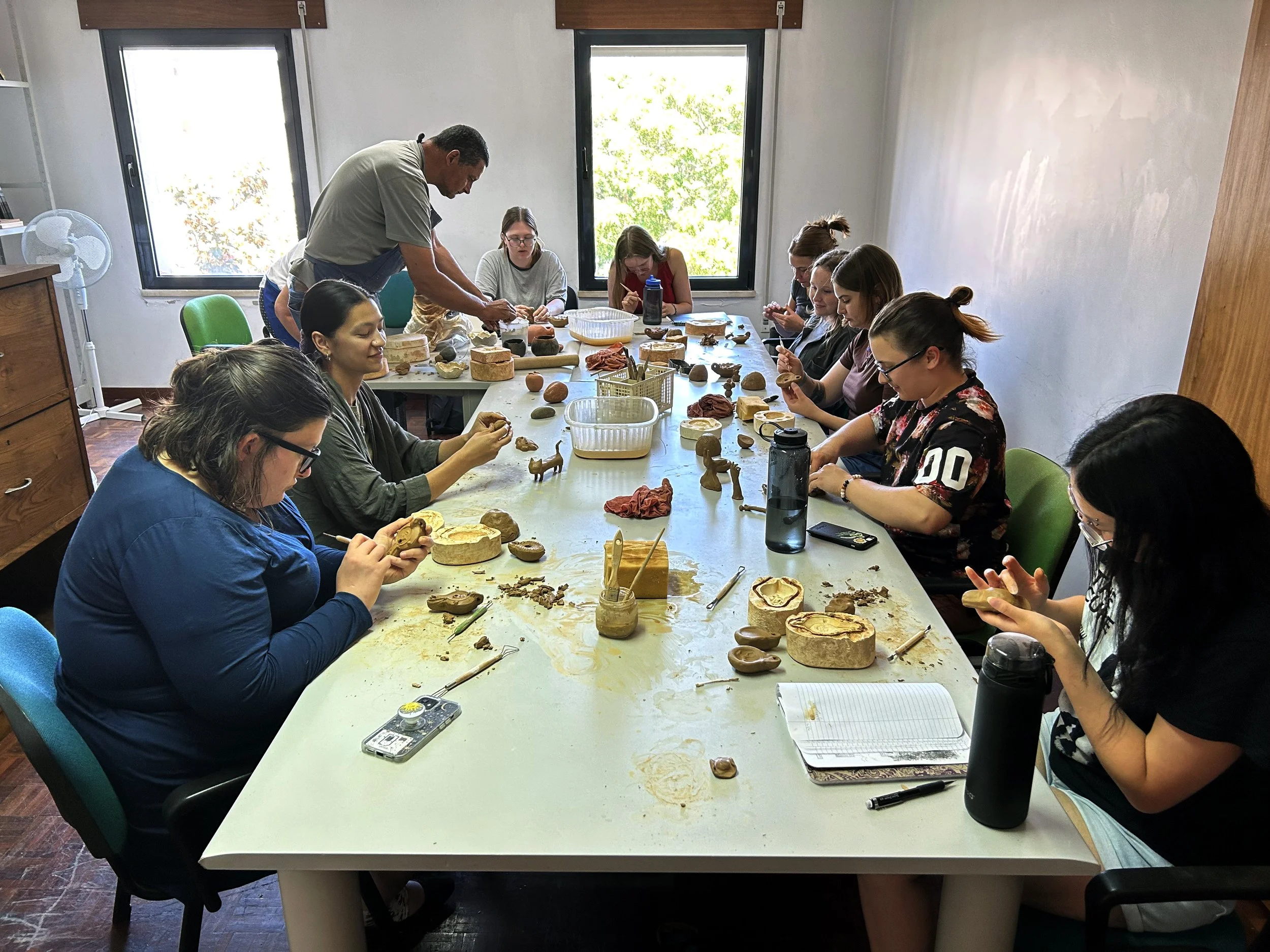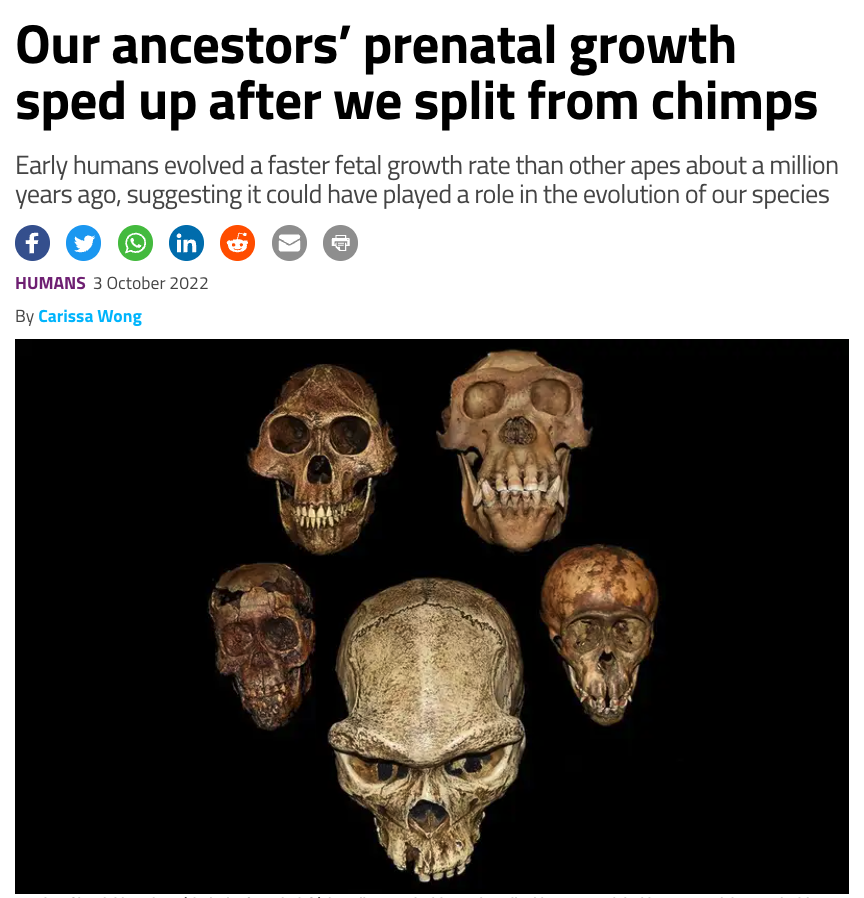This news story was drafted for Western News (modified version published on September 23, 2025).
This summer, just one week after wrapping up spring quarter final exams, nine Western students headed to Portugal for an intensive three-week learning experience as part of a new course called Museum Studies and Archaeological Heritage.
The course is a faculty-led global learning program through Western’s Education Abroad office and led by Assistant Professor of Anthropology, Marianne Brasil.
After a long international flight, students arrived in the heart of Vila do Conde, just north of the Porto city center, where they would be living together for three weeks. After a couple of days to settle into life in Portugal — while enjoying the festivities of the local Saint John’s celebration — they spent three weeks immersed in Portuguese culture. They learned about museum conservation and Portuguese archaeological heritage through hands-on work in the municipal archaeology lab, took excursions to archaeological field sites and museums, and attended experimental archaeology workshops and demonstrations.
On the first day in the lab, managed by the Archaeology Office within the Vila do Conde Municipality, students were faced with a challenge at each of their workstations: a tray with two ceramic objects that had been broken to smithereens, and which they would spend the next couple of weeks reconstructing and preparing for a mock exhibition.
Most days of the course were spent in the lab, working on their reconstructions while learning from expert colleagues about various conservation techniques and practicing their hands at methods including metal cleaning via sand blasting, using a scalpel at the microscope, and washing, labeling, consolidating, and reconstructing ceramics. The work was difficult and sometimes tedious but rewarding! And there were only one or two small mishaps with the adhesive…
Students working on ceramic reconstructions in the Vila do Conde archaeology lab
Excursions to local archaeological sites helped students learn about the landscape, current excavations, and context of the materials being studied in the lab. The sites in this area are known as “castros,” or “hillforts,” because of their fortified structures positioned at high vantage points (usually the top of a hill, with beautiful views of surrounding areas). The coastal site of Castro de São Paio was a student favorite for its seaside beauty. Visits to Cividade de Bagunte and Citânia de Briteiros demonstrated the variation in size and occupation patterns across sites in this area, as well as efforts at site reconstruction, ecological restoration, and public engagement activities.
Excursions to archaeological sites: Castro de São Paio (top left), Citânia de Briteiros (top right), and Cividade de Bagunte (bottom)
As part of these excursions, students had discussions with Portuguese colleagues about public engagement and support for archaeological science. In the lab, they also had the opportunity to learn about cutting-edge archival methods, and to contribute to research and outreach resources through digitizing archaeological artifacts and replicas via 3D surface scanning.
Students 3D surface scanning a handaxe from a local site
Two experimental archaeology experiences were among the highlights of the program. These were led by local ceramicists who use a mix of modern and traditional production techniques. One full day was spent on a pottery workshop where students got to get their hands dirty and learn how to make various kinds of hand-formed pottery, as well as how to make and use molds.
Pottery workshop led by local ceramicist and art instructor
On one of the final days of the course, the class loaded up into a minibus and drove inland to the beautiful mountainous region of Gondar. Here, students got to try their hands at multiple stages of pottery production, from pounding the clay nodules into powder, to working with wet clay on the traditional hand-powered low potter’s wheels.
But the most spectacular part of this experience was the pottery firing, using a traditional method — ‘soenga’ — which involves a giant bonfire in a large pit. This ancient firing technique has deep roots, having been practiced by the people of the Castro Culture of the Iron Age of Portugal to produce a beautiful and distinctive blackened style of pottery.
Excursion to Gondar to learn about traditional pottery production and firing techniques
These three weeks held many unique learning experiences and built a tight-knit community among the group, undoubtedly yielding lifelong friendships and memories.
The course would not have been possible without the collaboration and support of Portuguese colleagues, especially expert conservator Ana Valentim, head of the Municipal Culture and Tourism division in Vila do Conde, Pedro Brochado de Almeida, ceramicists Moises Tomé, João and Cesar Teixeira, museum expert Vitor Hugo, and archaeological expert Prof. Mariah Wade.
Prof. Brasil hopes to offer this course again in Summer 2026. Interested students should keep an eye out for updates and program information on Western’s Ed Abroad page.











